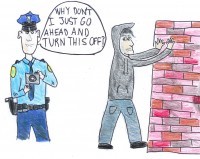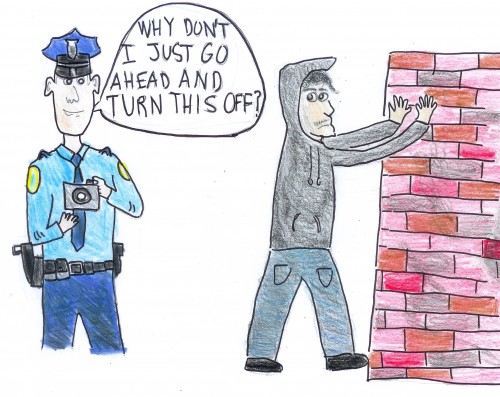Imagine driving home from work late at night and being pulled over by law enforcement. It seems like an ordinary traffic stop so you pull out your license and registration, hoping to be let off with a warning for whatever obscure law you broke. You wait patiently as police officers approach your car but instead of asking you to roll down your window, they are pointing guns at you and commanding you to get out of the car.
After a second police car appears through the shadowy night and strikes your car, you put your hands up. Before pulling you out of the car, police officers punch you in the face repeatedly and continue to do so once you are out of the car. You are later charged with eluding police, resisting arrest and assault although you have committed no crime.
This is exactly what happened to Marcus Jeter, a black resident of Bloomfield, New Jersey, in June 2012. The interesting thing is that the entire encounter was videotaped by a police officer’s dashboard camera. However, the police department did not initially release the video to the prosecutor who charged Jeter of his alleged crimes. Even after the gruesome video was released to the public, the police officers involved and their department maintained their case against Jeter and continually tried to suppress the video in court.
Even though Bloomfield is on the other side of the country, it is a worthwhile incident to consider in the debate over the use of police body cameras in light of recent events around the country, cities have been working out the details to get police equipped with body cameras.
The Santa Clara County Board of Supervisors is currently looking into this possibility. If they decide to do so, we may see body cameras on Cupertino police officers before the start of the next year. On the surface, police body cameras sound like a win-win. Victims of police misconduct will be able to provide proof of the incident, and police officers who are falsely accused will be able to clear their name with video evidence showing an absence of such conduct. With corroborating video evidence, the judicial process will also be much quicker as well. The only current objection seems to be the amount of money it would take to equip officers with body cameras. However, this issue can easily be solved by diverting unnecessary funds intended to excessively militarize police forces, which contributes to the growing problematic “them, us” ideology. Police body cameras sound like the perfect solution don’t they?
I am sorry to say that police body cameras, although a necessary measure, will do very little in terms of justice.
In Jeter’s case, video evidence of police misconduct was luckily enough to bring about justice. The same cannot be said for Eric Garner, who was choked to death on camera in July, 2014. The video taken by a bystander shows that even after Garner was forced to the ground, officer David Pantaleo continued to choke him. Pantaleo’s blatant violation of department policy led to an undeserved and unjustified death that was caught on video. However, Garner and his family have not and probably will never receive the justice they deserve.
The issue is that even when video evidence is presented, it is most often seen with a certain bias. In a landmark 1980 study conducted by sociologists Andrew Sagar and Janet Schofield, white and black middle school students were asked to evaluate certain photos in which it was unclear whether an aggressor was playfully jostling another child or viciously pushing him. The study shows that all of the students were most likely to view the child pushing as a violent aggressor if he was black.
It was a miracle that the video evidence surfaced in Jeter’s case to indict the police officers involved for police misconduct, but there was still a strong possibility of it never surfacing. Cameras can always be turned off, video can always be erased and files can always be corrupted. We still live in a system in which the police continue to police themselves. In other words, accountability will not be achieved until those who need to be held accountable are done so without bias, and by far the most biased thing to do is to have someone monitor themselves for criminal activity.
The biggest result of equipping officers with body cameras will probably be that police departments will now have thousands of hours of video which they may release all at their own digression. Because of this, they will have the opportunity to prove the truth that is beneficial to them but will also have the ability to ignore the evidence that is not beneficial to them. In addition, sometimes even conclusive and public video evidence fails to achieve justice. This is mostly due to racial biases. While police body cameras might be a step in the right direction, they are far from being a cure-all.






















